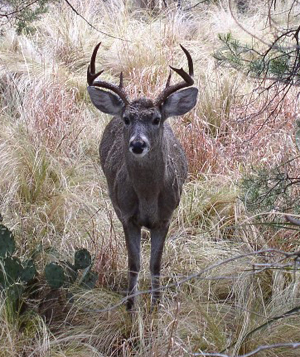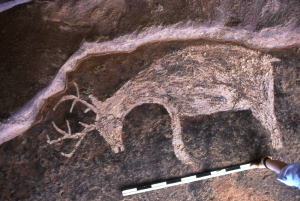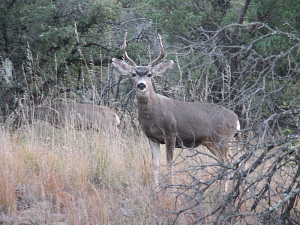Deer
Deer delivered enormous “bang for the buck” to native peoples. They not only provided large sources of protein in one kill, they also contributed bones and antlers for tools, sinew for cording, and hides for clothing and coverings. Native peoples often processed the bones of deer and other large animals intensively to obtain marrow and fat, an essential part of their diet.
The native peoples of the Trans-Pecos hunted mule deer (Odocoileus hemionus), white-tailed deer (Odocoileus virginianus), and Carmen deer (Odocoileus virginianus carminis), a subspecies of white-tailed deer confined to the Chisos Mountains of the Big Bend. In the faunal assemblages of lowland sites deer is usually second in frequency only to rabbit, and in rockshelters in the mountains deer is often the dominant animal represented. At Fresnal Shelter, for instance, mule deer makes up 99% of the Late Archaic faunal assemblage and a similar percentage of assemblages from other periods.
In addition to economic utility, deer had ritual significance for the native peoples of the Trans-Pecos. A deer hoof tinkler was recovered from a child’s burial at Granado Cave and numerous painted deer scapulae were found at Cueva Pilote. Both deer themselves and their antlers are popular motifs in rockart across the region, including that at Alamo Canyon and Hueco Tanks.

|

|
